NEW HOPE, PA – The multi-faceted Scudder Falls Bridge Replacement Project took another step forward today as the Delaware River Joint Toll Bridge Commission approved a contract with Hill International of Philadelphia, PA to provide construction management services for the upcoming project.
The contract, which was competitively procured, is for a not-to-exceed amount of $25,015,066.98 and involves a wide array of oversight and reporting functions to be performed over the roughly four-year execution of the bridge replacement project. The New Jersey and Pennsylvania representatives on the bistate Commission unanimously approved the contract at Monday’s monthly board meeting.
Hill International, a world-wide engineering firm with expertise in project management, will be responsible for a variety of project tasks, including establishing and monitoring the project schedule and construction progress, reviewing shop drawings, budgeting of the project and its finances, conducting safety and material inspections, and administering invoicing and payments. The firm also will supervise the network of field inspectors that the Commission intends to bring on board to oversee the project’s numerous construction tasks.
A range of pre-construction activities related to the Scudder Falls Bridge Replacement Project are currently underway. Following the close of the Indiana bat foraging season on October 1, Stage 2 tree cutting work is now fully underway on both the New Jersey and Pennsylvania sides of the bridge. Work crews are also in the process of installing noise abatement walls along the bridge’s Pennsylvania I-95 approach. At the same time, crews are preparing the underside of the current Scudder Falls Bridge for the upcoming replacement project.
The Commission is in the process of having existing gas, electric, and telecommunications utility lines relocated in the vicinity of the current bridge and the nearby Taylorsville Road Interchange in Pennsylvania.
The Scudder Falls Bridge Replacement Project involves a heavily commuted 4.4-mile portion of the I-95 corridor extending from the Route 332/Yardley-Newtown Road interchange (exit 49) in Bucks County, PA and the Bear Tavern Road/Route 579 interchange (exit 2) in Mercer County, NJ. The congestion-prone highway segment is a choke point for job-commuter traffic between the two states.
The nearly 55-year-old bridge and nearby interchanges are classified as functionally obsolete. To address recurring traffic safety and capacity problems at the bridge, its adjoining interchanges and I-95 approaches, the Commission is pursuing a comprehensive project for the highway segment.Final design on the project was completed in September and the Commission has advertised for bids for the main construction contract. Construction is expected to begin in early 2017. More information and videos on the bridge replacement project are available at www.scudderfallsbridge.com/.
Project elements include:
– Replacing the existing four-lane Scudder Falls Bridge with a twin-span structure carrying six lanes of through traffic (three in each direction), and three auxiliary lanes (two northbound, one southbound) for traffic merging on and off the bridge.
-Overhauling the accident-prone Route 29/175 interchange on the New Jersey side to improve the safety and efficiency of the interchange.
– Reconfiguring the Taylorsville Road interchange in Lower Makefield, PA to improve the safety and efficiency of the interchange.
– Making drainage upgrades and other improvements along the approach highway between the Route 29/175 interchange and Bear Tavern Road in New Jersey.
– Inside widening of the Pennsylvania I-95 approach between the Route 332 exit and the bridge by adding an additional lane and full shoulders in each direction.
– Providing a bicycle/pedestrian walkway alongside the main river bridge connecting the recreational canal paths on both sides of the river.
– Constructing full inside and outside shoulders on both replacement bridge spans, a current highway standard requirement. (The bridge’s inside shoulders will be sized to allow for future bus rapid transit service.)
– Installing an all-electronic toll (AET) gantry and related infrastructure in the southbound direction consisting of highway-speed E-ZPass tag readers and high-speed video cameras for license-plate billing.
– Constructing noise-abatement walls along warranted sections of the approach roadways leading to and from the bridge.
